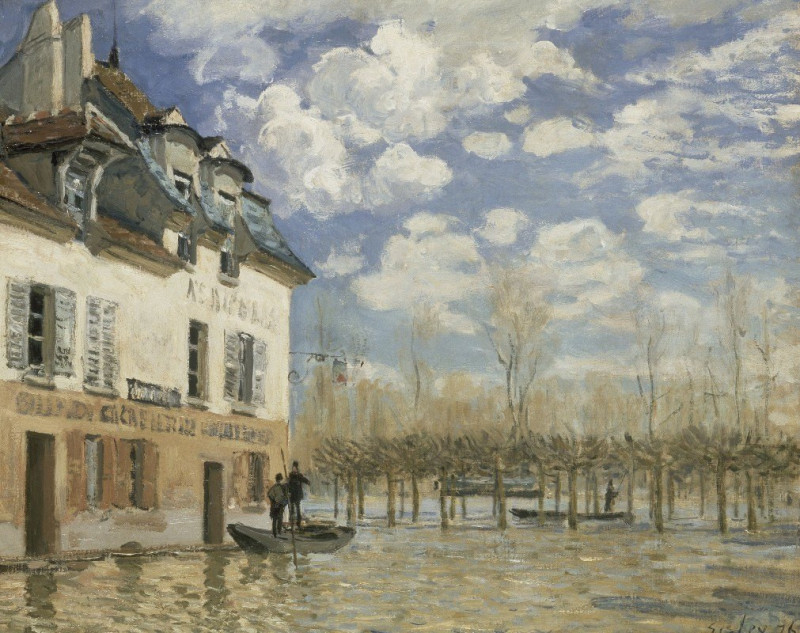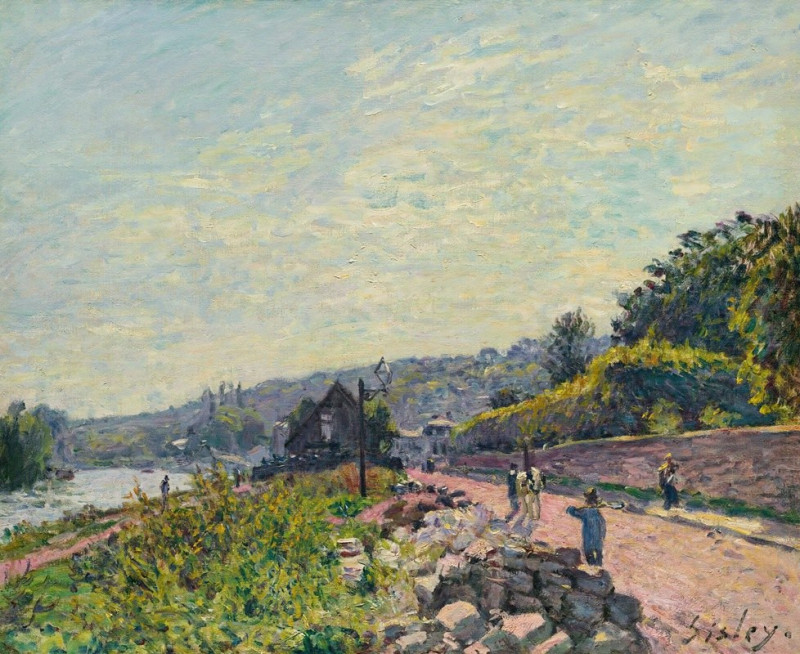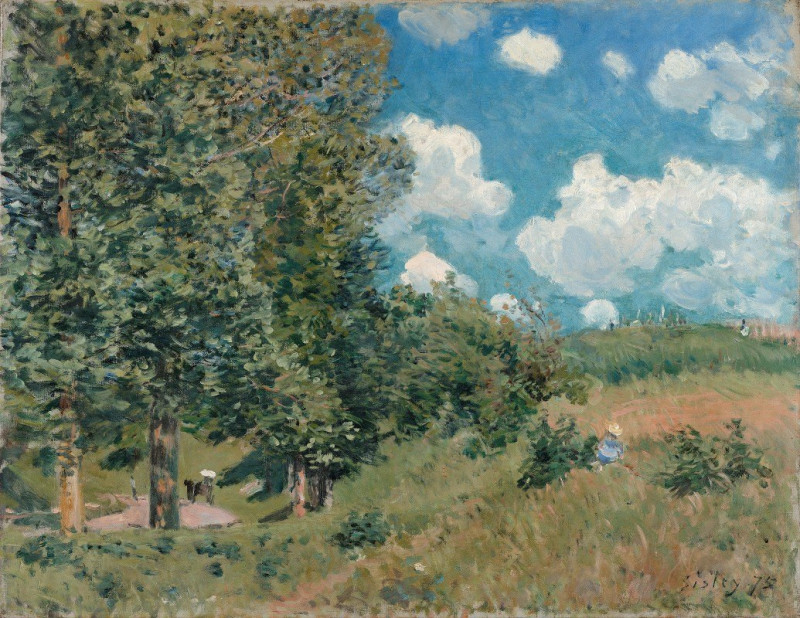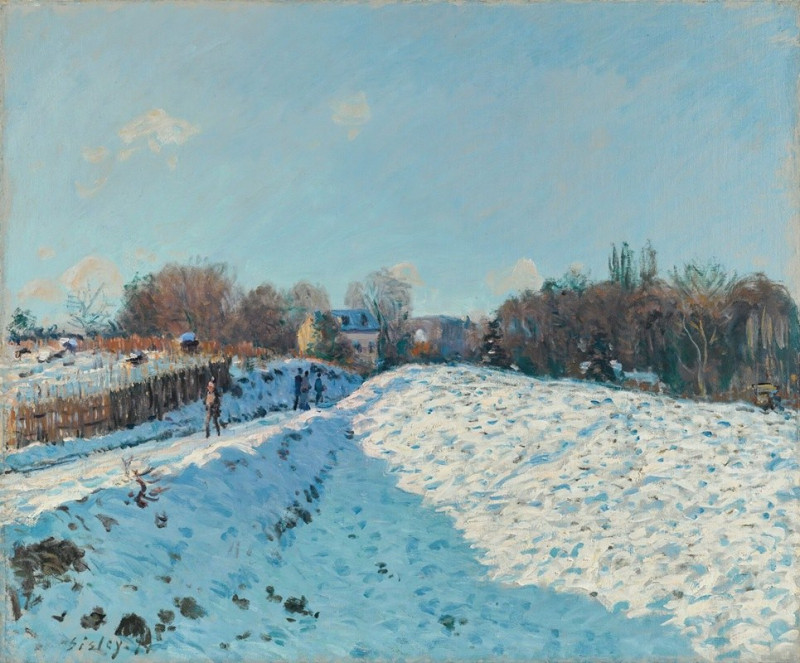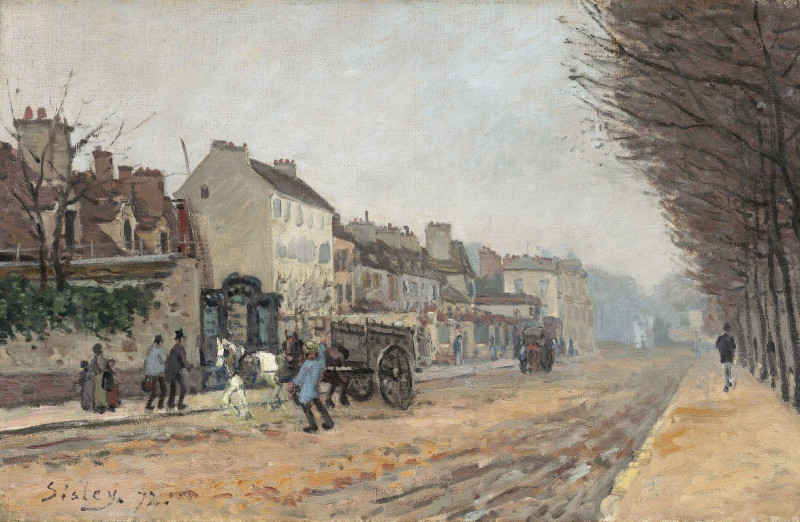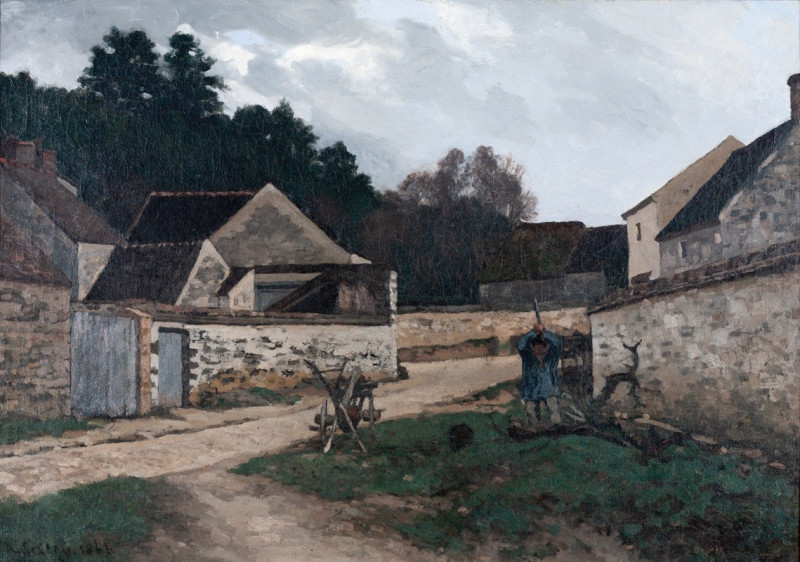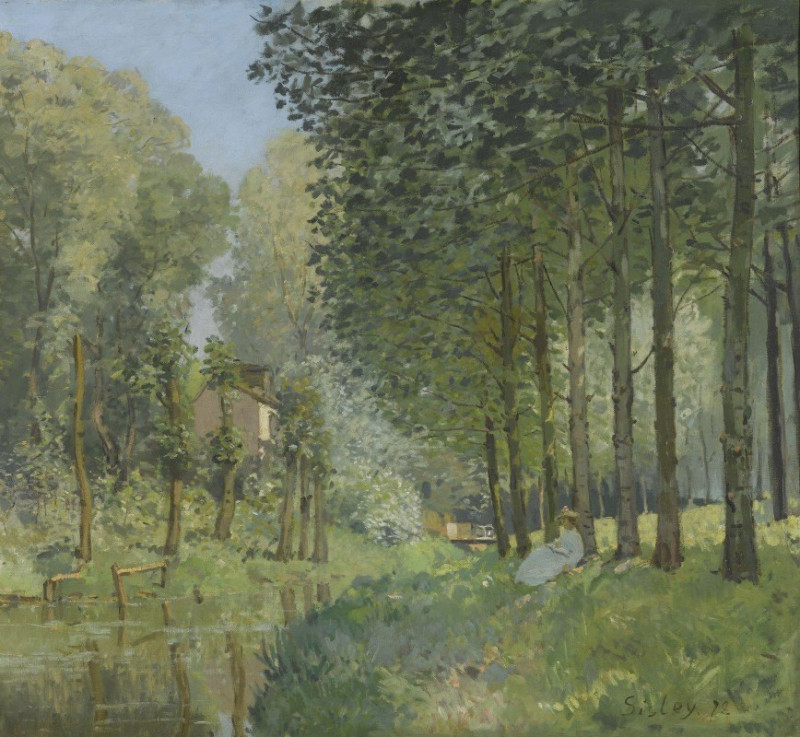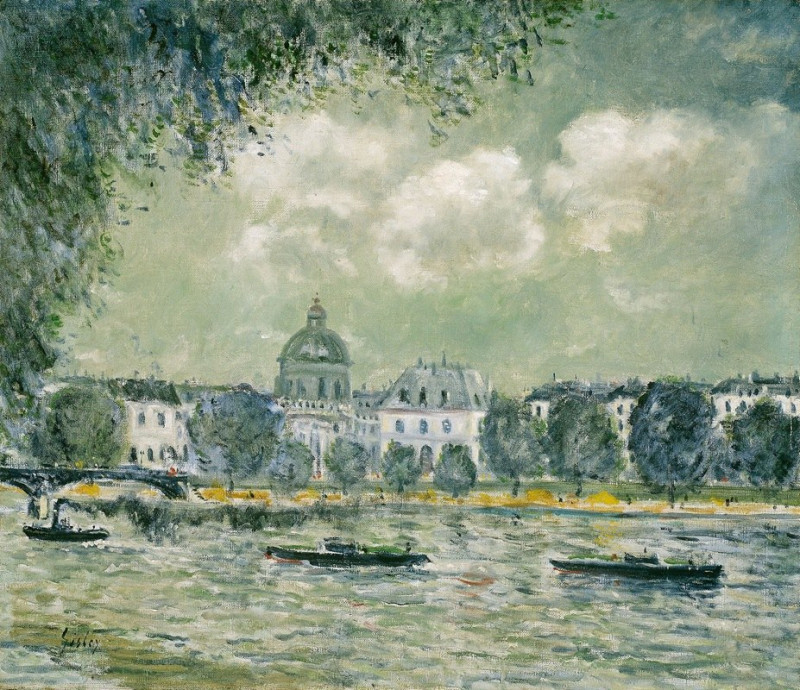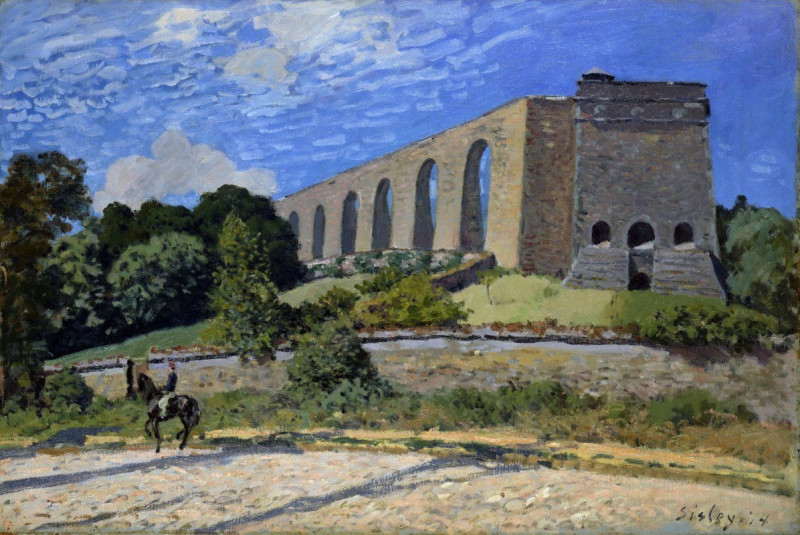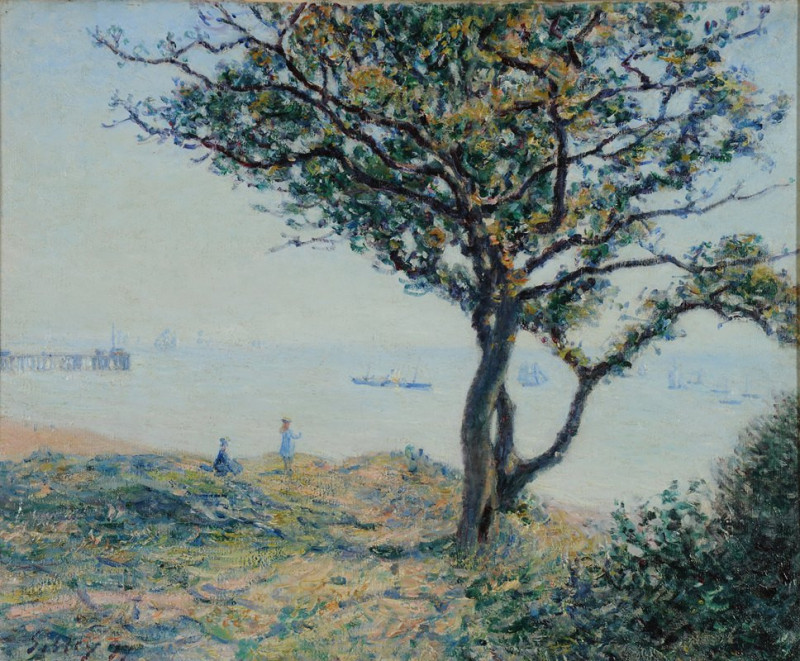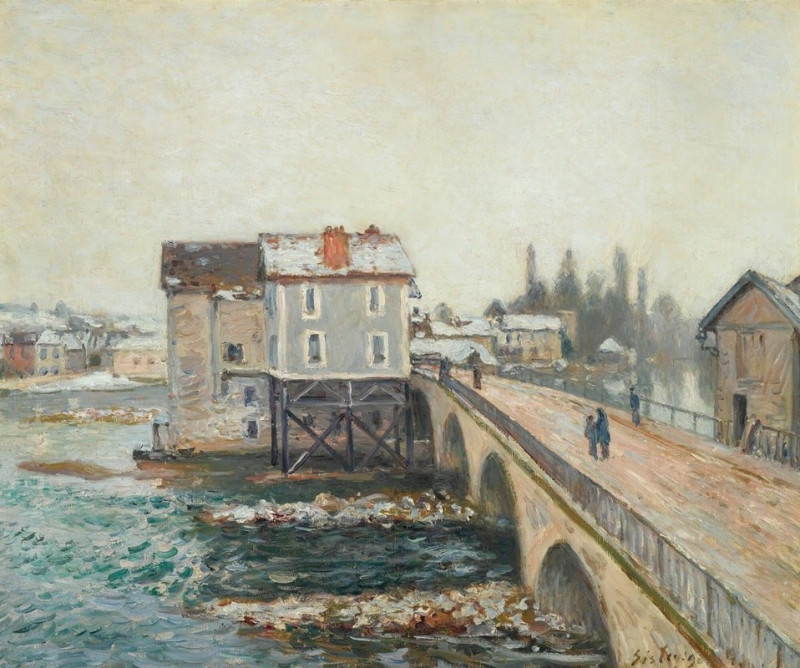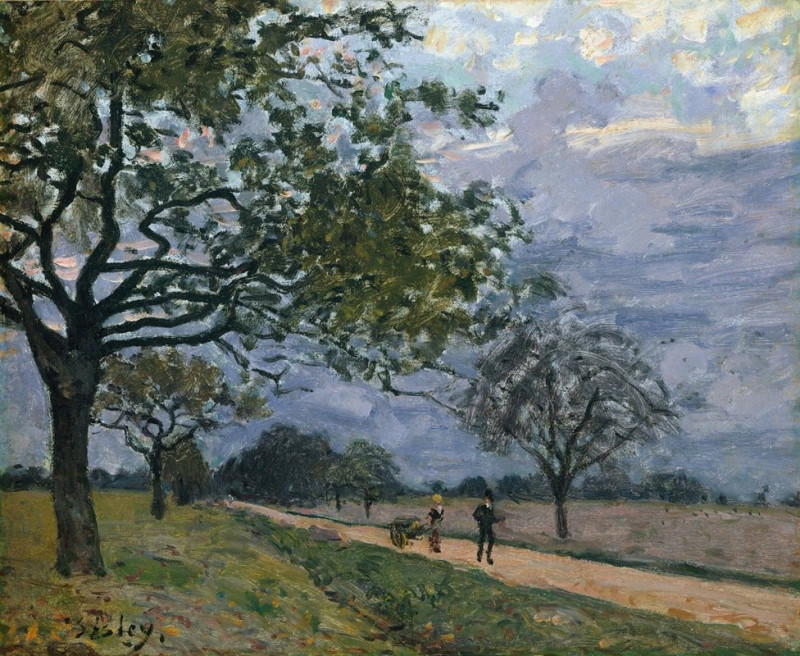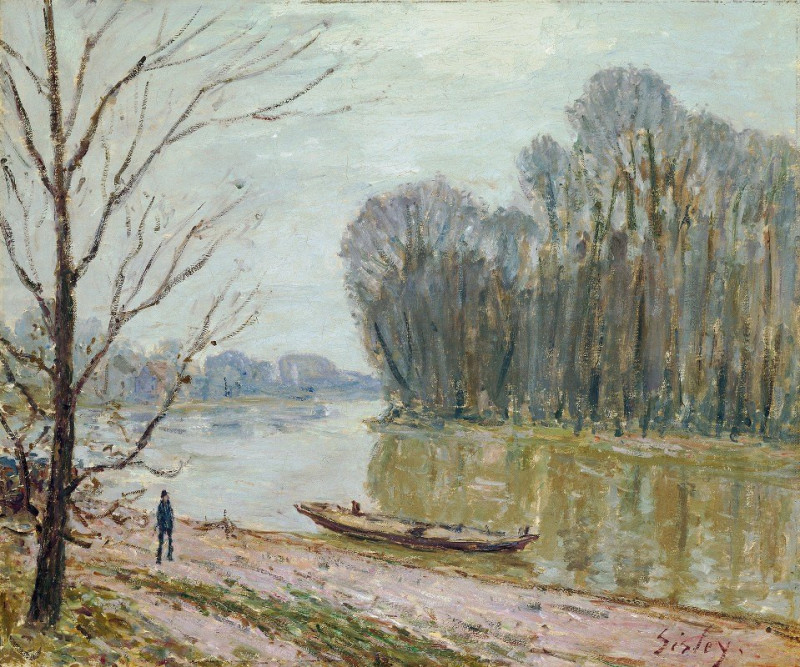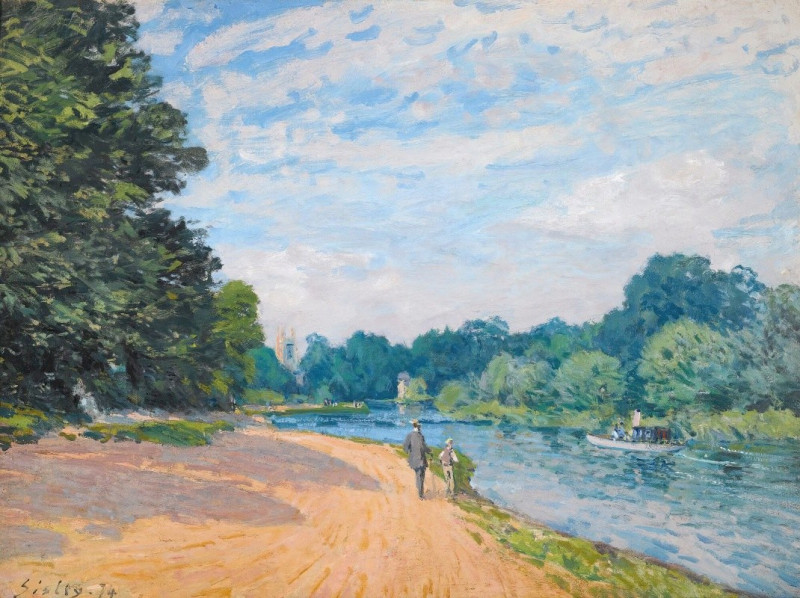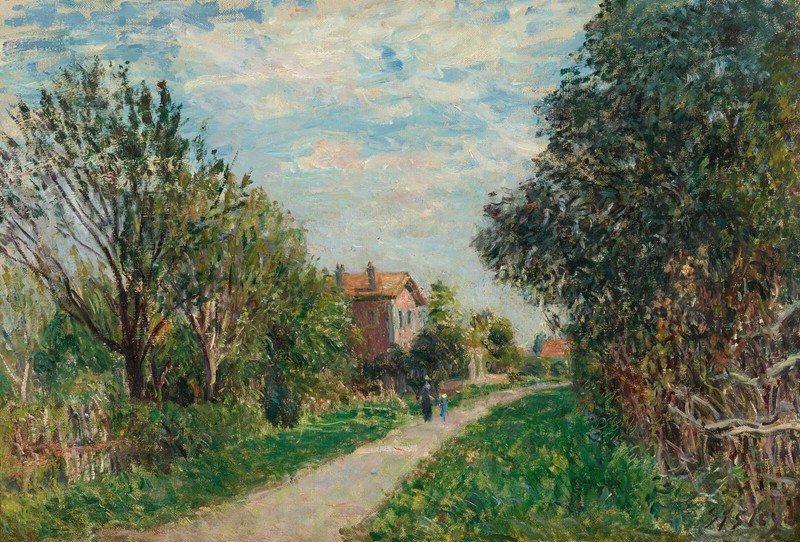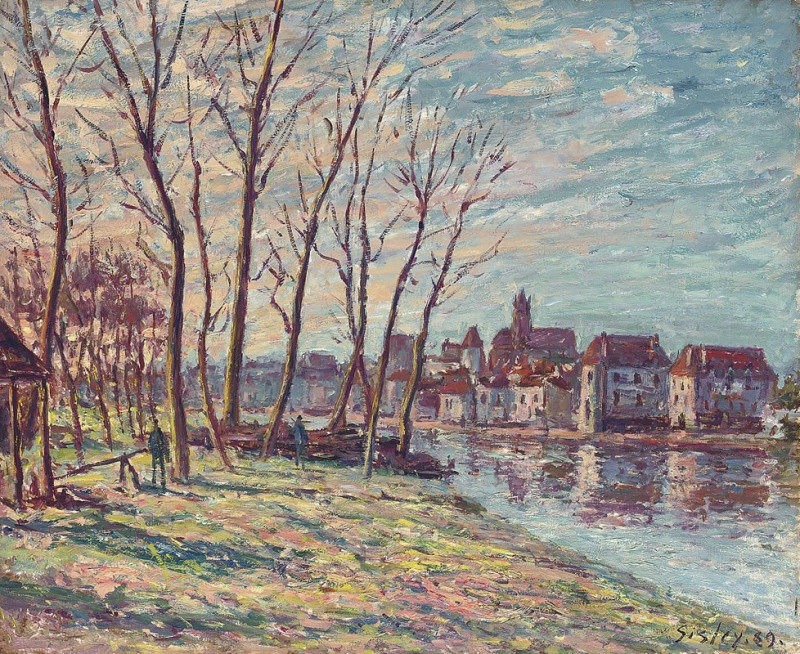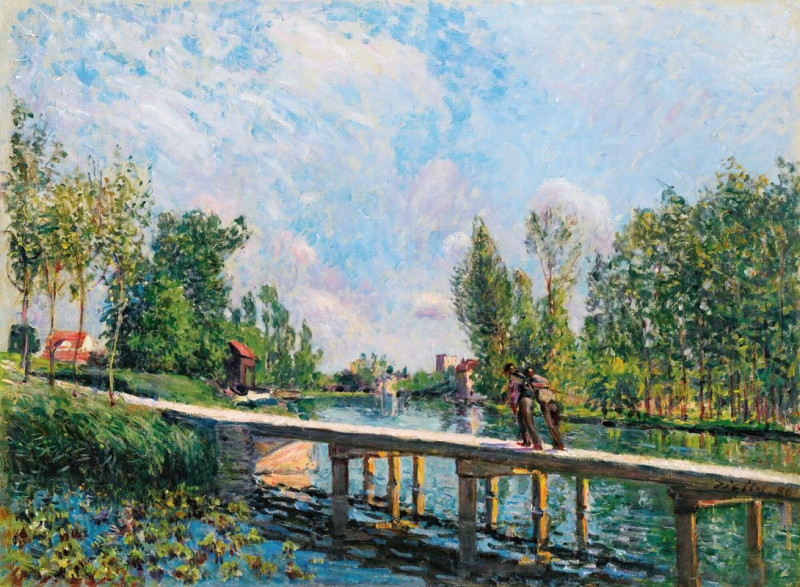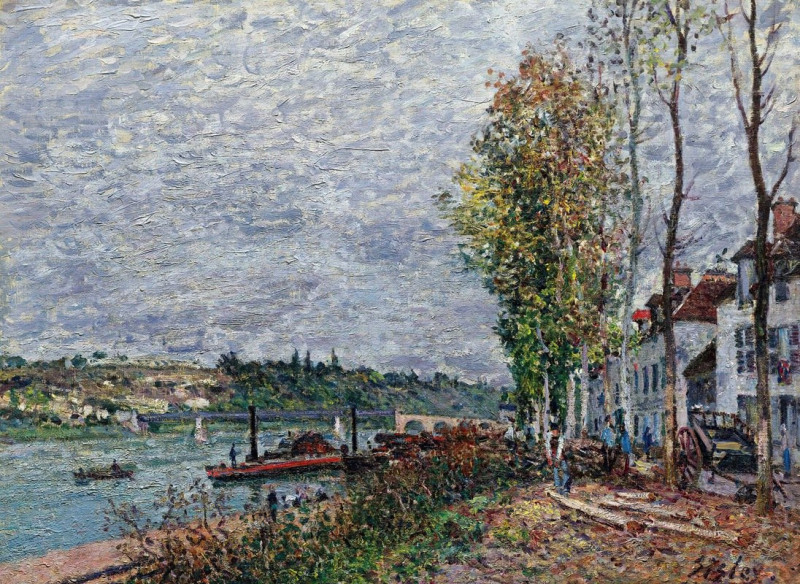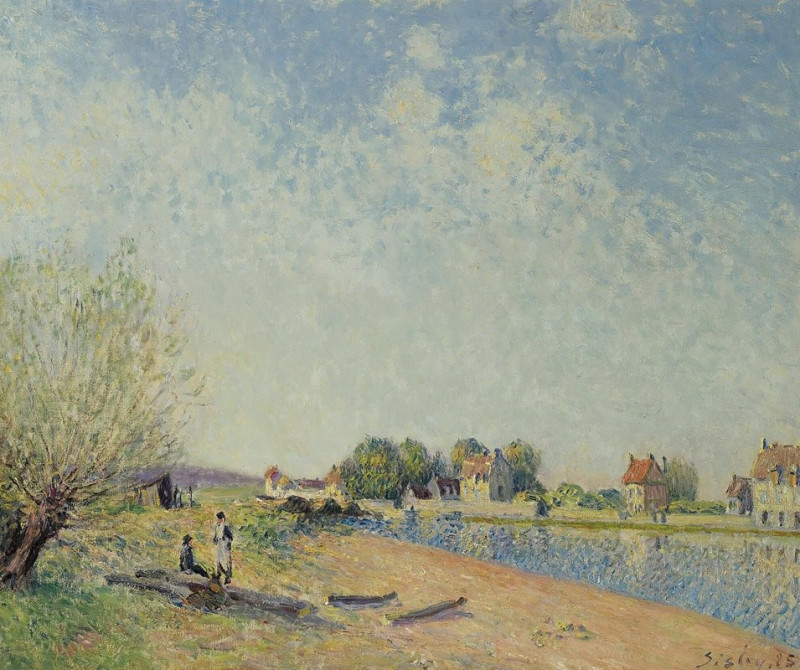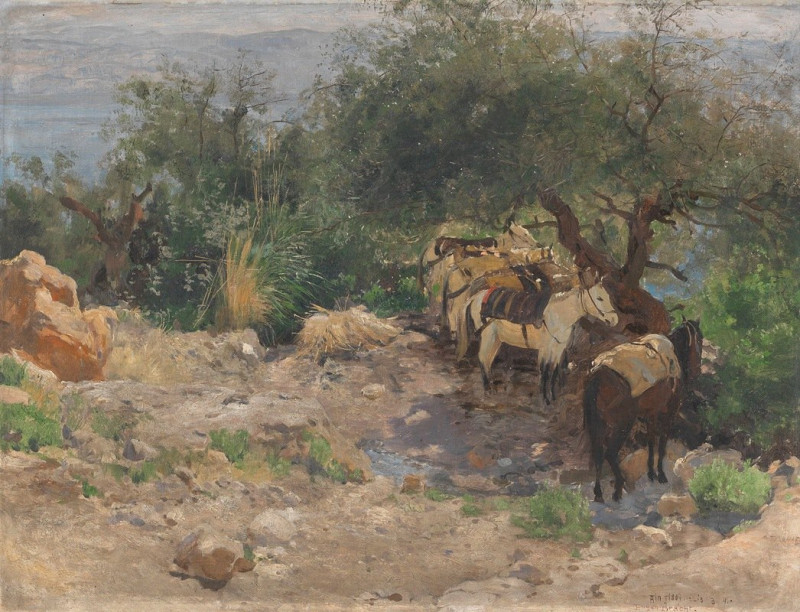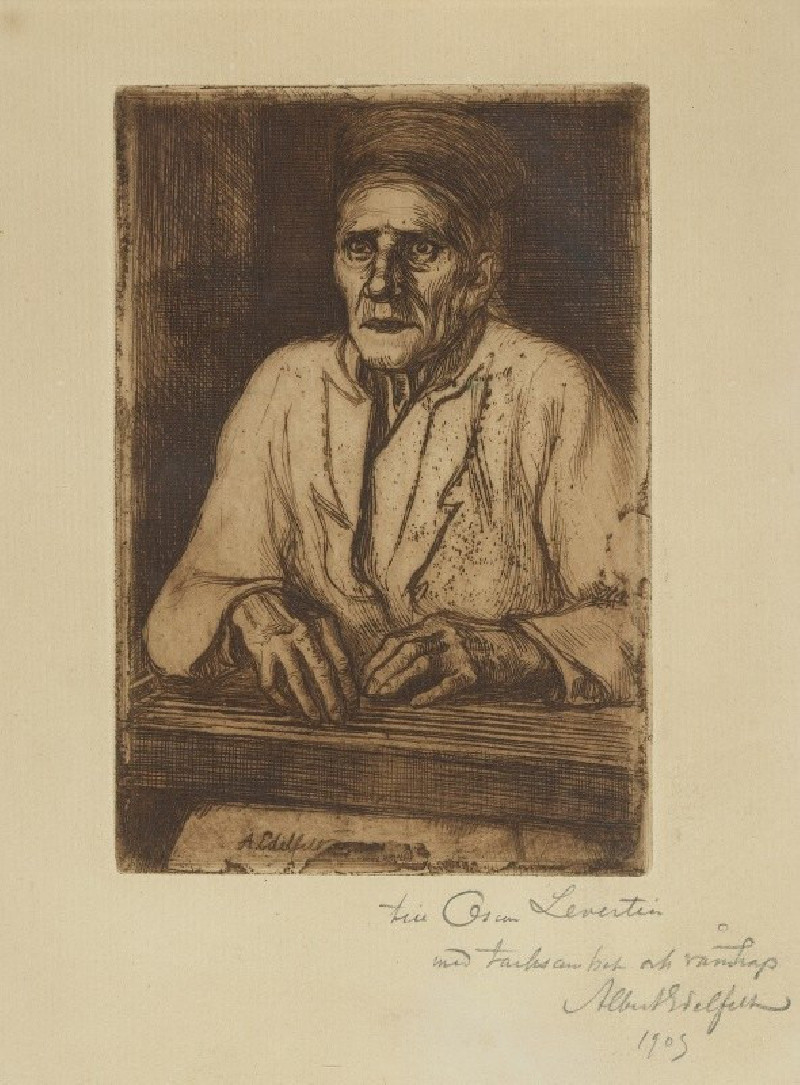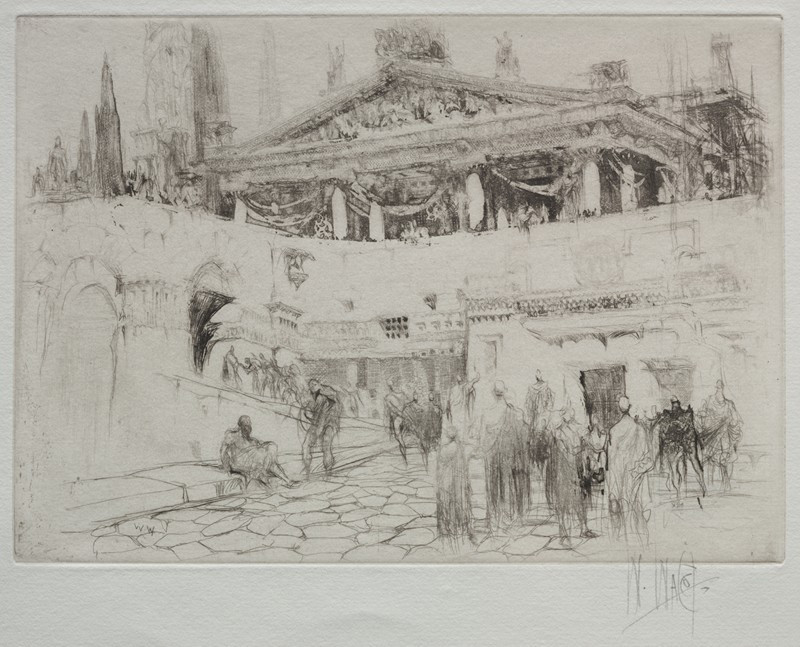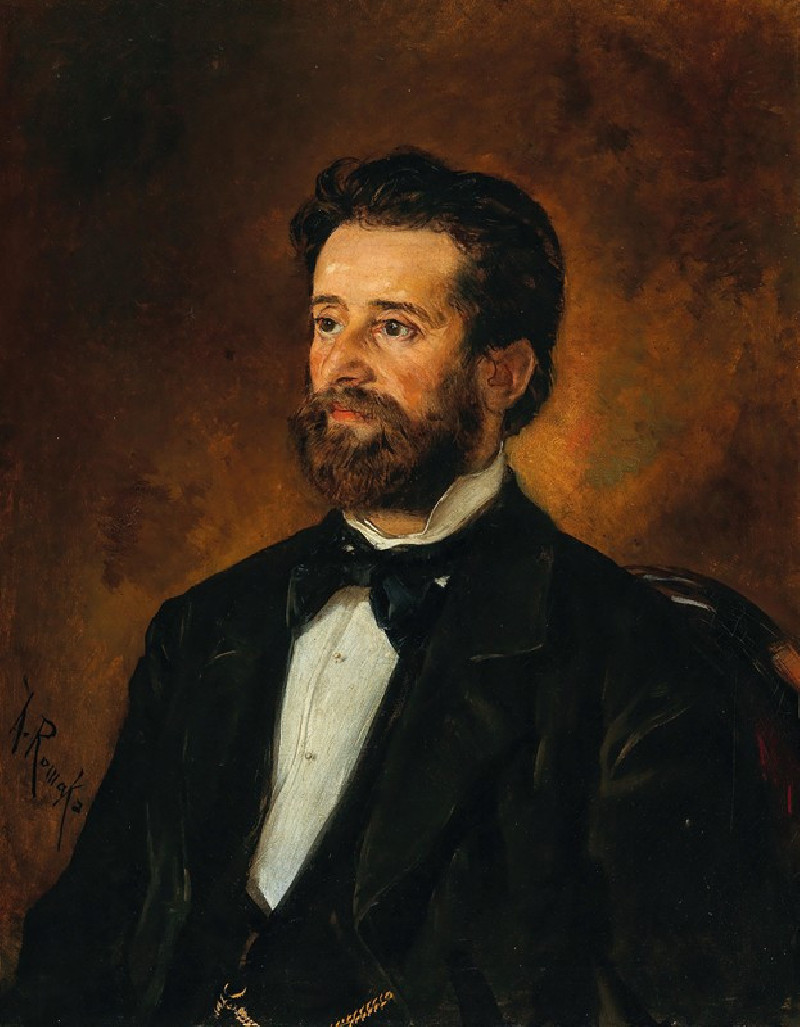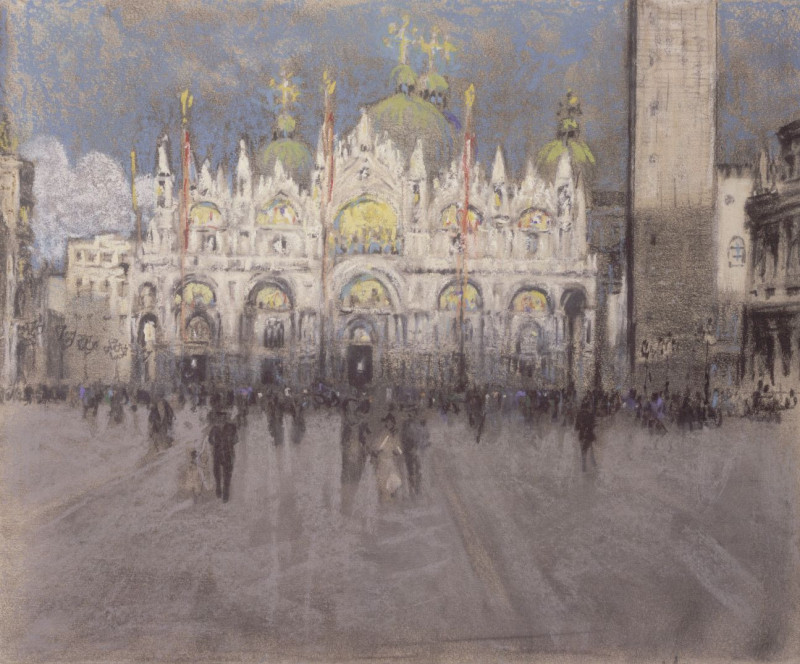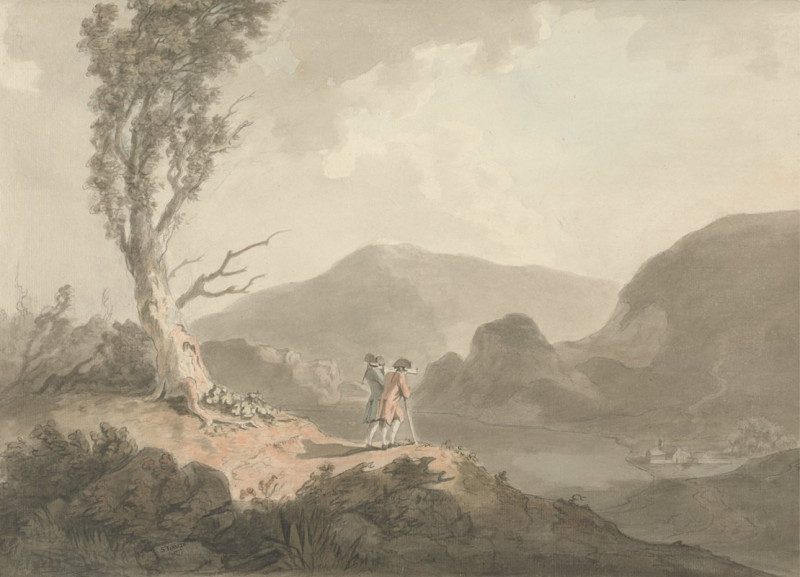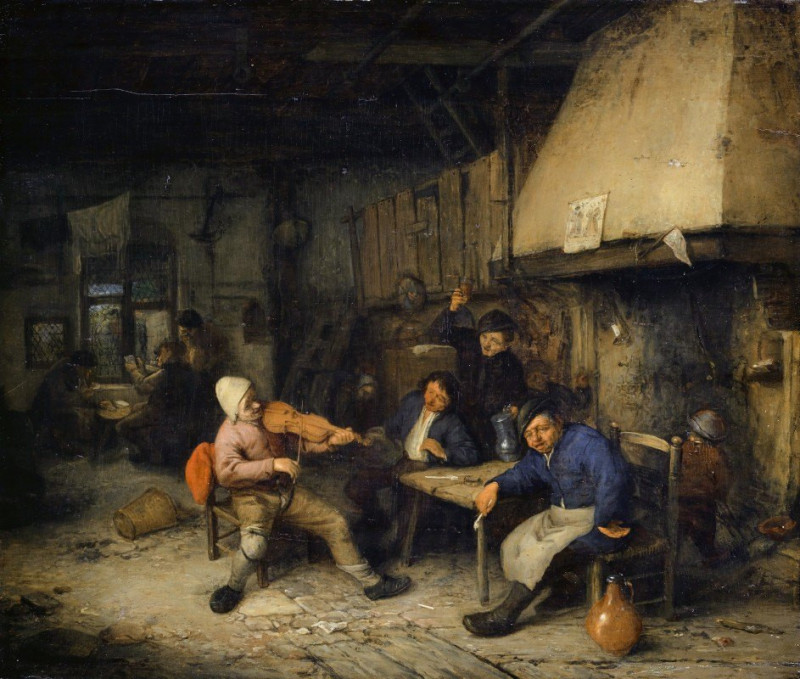Boat in the Flood at Port Marly (1876)
Technique: Giclée quality print
Recommended by our customers
More about this artwork
Alfred Sisley's painting "Boat in the Flood at Port Marly" is a mesmerizing depiction of a serene yet significant natural occurrence. Painted in 1876, this artwork stands out as a quintessential example of Sisley’s dedication to the Impressionist movement, demonstrating his masterful handling of light and his gentle approach to landscape painting.The scene captures the floodwaters of the Seine, which have inundated the streets of Port Marly, a small town west of Paris. The water reflects a soft, vibrant light, contrasting with the cloudy sky and lends a dreamlike quality to the otherwise disrupted setting. Central to the composition is a small boat, gently navigated by two figures. This boat, a tiny speck of human resilience amidst the submerging nature, adds a profound depth to the painting’s theme, symbolizing both vulnerability and adaptability.In the background, submerged trees line up uniformly, partially covered by the reflective waters, suggesting the depth of the flood. The building on the left, with its shutters partly closed and the facade reading "Au Pavillon Henri IV", also partially engulfed by the floodwaters, gives a glimpse into the impact of the flood on daily life and local commerce."Boat in the Flood at Port Marly" is not just a beautiful portrayal of a moment in time; it is a reflection on nature's overpowering force and the subtle human effort to persevere through it.
Delivery
Returns
Alfred Sisley (1839–1899), an English impressionist artist, was renowned for his breathtaking impressionist landscape paintings. Born in 1839 to a wealthy family in Paris, Sisley spent most of his life in France. Despite being intended for a career in commerce, he rebelled and pursued his passion for painting as an amateur in the studio of Charles Gleyre, where he befriended artists Claude Monet and Pierre-Auguste Renoir. The financial loss of his family in the Franco-German War led Sisley to make a career out of his art, though it left him financially distressed. It wasn't until after his passing in 1899 that the true value of his work was recognized.

